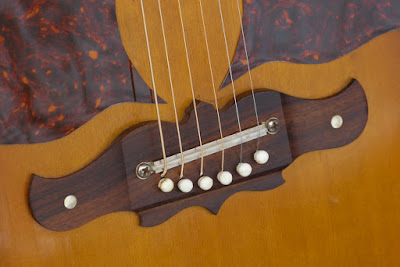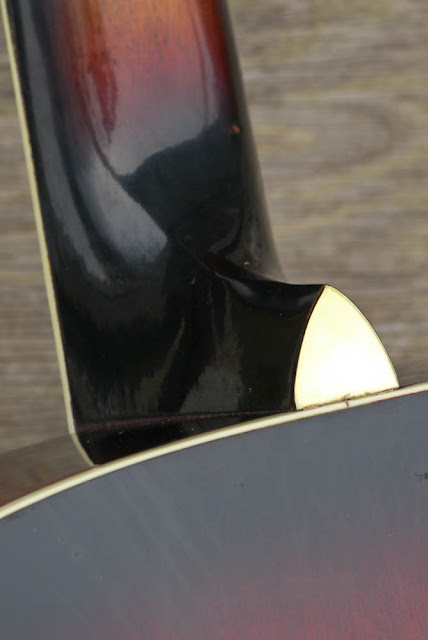1972 Harmony H1266 Sovereign Jumbo Guitar
Here's big, bad 16" sunburst Harmony number two for this week. Both are '72s and both have been worked-over into primo players. Like the other one, this is a big, wide, ladder-braced guitar that has a huge boom and authority in its voice. This example is slightly warmer and slightly less-punchy than the other, and this gives it a tone very reminiscent (in its own way) of 60s Gibsons that also share adjustable-saddle bridges.
It's all-original save some brand-new replacement pickguards and an older bone nut and crack-free to boot. The look is, of course, very "neon cowboy western," and for that reason alone these have become popular stage guitars of late. The other reason is, as noted, they sound tremendous and can be excellent players when fixed-up.
My work included a neck reset, fret level/dress, cleaning, headstock veneer reglue (here and there), compensation at the saddle, and cutting/installing a pair of new pickguards. The guitar is 100% ready to go with a straight neck, functioning truss, and strung with lights and 3/32" EA and 1/16" DGBE action at the 12th fret.
The only old work I've seen on the instrument is an old seam repair at the endblock and a replacement nut.
Who doesn't love the look of that multi-ply veneer?
Also: the older replacement bone nut is nicely-made and spaced comfortably. The nut width is a hair over 1 11/16" and the neck profile is a comfortable, fairly-modern C-shape. As usual, this has Harmony's standard 25 1/4" scale length.
Big pearloid block markers are set into the rosewood board. This has a 14" radius and the frets are all in nearly full-height, good order.
I cut my new pickguards from tracings I did of the "pickguard shadows" on the top. The originals must've been taken off a long time ago but I don't like seeing any sort of shadow (personally) on the top, so I decided to make these. It's a time-consuming process to recreate them but it sure does look country-western fantastic this way.
These are transparent, one-ply tortoise material so unlike the original multi-ply (almost like Fender pickguard) material, they don't damp the top vibrations as far as I can tell.
The adjustable bridge is in good shape -- and don't you love its oversized "bad guy" mustache look? The saddle is actually cranked all the way up right now -- which is good. In wetter times of the year the top will swell a hair and it'll be easy-peasy to crank down the action with the help of 15 seconds and a screwdriver.
For those not in the know: these guitars have solid mahogany back/sides and necks and solid spruce tops. The board and bridge are rosewood.
You can see how the fretboard extension dips down just slightly past the neck joint.
Here's a bit of finish muck at the endblock area from someone's old seam repairs. They're in good stead.




















Comments